Ankle & Foot Tendonitis: 5 MAIN Causes, Symptoms, Treatment

Last updated on July 26th, 2018 at 04:23 pm
Question: What causes ankle and foot tendonitis?
Foot pain is quite a common problem that affects the young and old. One common cause of foot pain is tendonitis.
Tendonitis means inflammation of the tendon that runs over, under, or on the sides of the foot. A tendon is a strong band that joins muscle to bones. Inflammation and tear of tendons and ligaments around the foot will cause ankle and foot tendonitis.
In simple terms, if your tendons get inflamed, you will experience mild or severe pain around the affected tendon. Other symptoms are
- Swelling
- Decreased flexibility of the ankle joint
- Painful foot when running or walking.
So, if your foot hurts during activity and eases off during rest, there is a possibility that you’ve injured one of your tendons.
It is important you see a podiatrist or orthopedic foot surgeon to easily diagnose why you have foot pain. Remember, there are many causes of foot pain. In severe cases, it could be a fracture or an ankle sprain.
 Here are some questions your doctor will need you to answer to learn why you have foot pain
Here are some questions your doctor will need you to answer to learn why you have foot pain
- When did foot or Anke joint pain start?
- Do you feel pain on top of the foot?
- Do you experience side of foot pain?
- Any swelling and pain at the bottom of the foot?
- Do you also experience pain inside of the foot?
- Any back of ankle pain?
- Is pain worse during activity like jumping, ballet dancing walking or running?
- Do you wear high heels for long periods?
- Do you run with tight shoes impinging on your foot?
- Did you recently twist your ankle joint?
- Is there any recent direct injury to your foot or ankle?
- Does pain subside at rest?
- Any known aggravating factor?
- Any relieving factor?
This article explains ankle and foot tendonitis, causes, and treatment options.
What are tendons and ligaments?
Tendons are tough connective tissues whose main function is to connect muscle to bones. So, when you move around, your muscles contracts, pulls your tendons, which in turn allows movement to occur. Tendons are located on the top, bottom, and sides of the foot.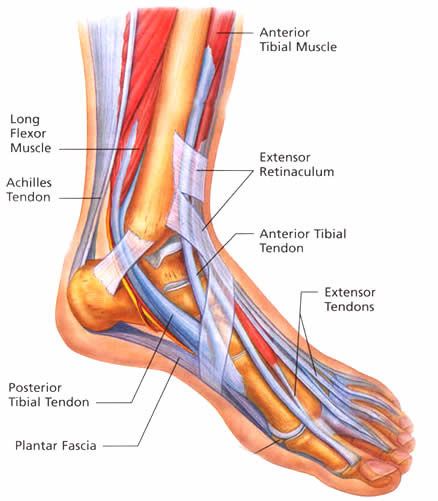
On the top of the foot are extensor tendons that help move your foot towards the front of the leg (dorsiflexion) There include
- Extensor digitorum muscle tendon
- Extensor hallucis longus tendon
- Tendon of the tibialis anterior
On the side of the foot are
- The posterior tibial tibia tendon located at the inner side of your foot
- The two peroneal tendons located on the outside of the foot
At the back of the foot is the Achilles tendon that stretches from the posterior part of the leg and gets attached to the heel bone (calcaneus).
Also present at your ankle and foot are ligaments. These ligaments primarily hold bones in shape. If they get injured, you will experience foot pain and swelling.
What causes ankle and foot tendonitis?
1. Foot overuse
For athletes and runners, the feet are on repetitive pressure. Running long distance, especially on badly fitted shoes, put tension on your foot tendons resulting in inflammation.
2. Direct injury of the ankle and foot
Persistent pressure on your ankle tendons can cause inflammation. Also, sudden foot injury from abnormal foot rotation can cause tendonitis.
3. Abnormal shape of the foot
A very high foot or flat foot will cause abnormal pull of your tendons. This can cause foot tendonitis.
Symptoms of foot and ankle tendonitis
1. Foot Pain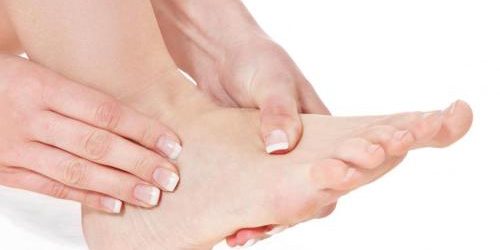
Generally, when there is inflammation of tendons, there is a characterized pain in the affected area.
For example, if the extensor tendons are inflamed, you will experience pain on top of the foot. Likewise, if the tendons on the side of the foot are inflamed, you will have pain on the outside or inner foot.
2. Swelling
In mild cases, you may not have swelling of the foot. Or if they occur, it resolves quickly. In severe cases like an ankle sprain when your ligament gets torn, pain and swelling is common and may last for days.
3. Difficult in walking or running
As expected, walking and running will come with difficulty if your tendons are inflamed. You will notice pain in the affected tendon area during movement. At rest, when the pressure is off, pain usually subsides.
4. Joint stiffness
During ankle tendonitis, you will feel stiffness while walking or moving your foot up and down. This is because pain and swelling limits joint flexibility. In severe cases of tendon damage, you will be unable to use your foot.
Types of Ankle and foot tendonitis
1. Extensor Tendonitis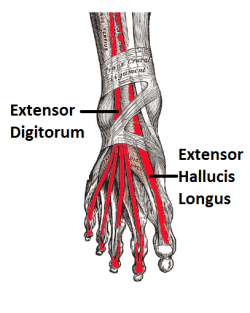
Extensor tendonitis is inflammation of group of tendons that run over the top of your foot. These tendons can easily be affected by the use of tight-fitting shoes, especially those with a hard upper surface.
As you walk, persistent pressure on your extensor tendons causes injury and inflammation. Most commonly, extensor tendonitis affects runners, athletes, and cyclist.
Causes
- Use of poorly fitting shoes for running
- Running on bumpy or slippery surfaces
- A sudden change of your routine exercise with increased intensity.
- Running uphill or downhill
Symptoms
- Top of foot pain when running that relieves at rest
- Swelling of the top of foot
2. Achilles tendonitis
When the Achilles tendon becomes inflamed, you can expect pain at the back of the foot and swelling. The Achilles tendon runs downwards through your legs to be attached to the calcaneus bone (heel bone).
When inflamed, you will notice mild or severe pain while walking, running or standing on the ball of the foot.
Causes
- Repetitive injury to the Achilles tendon
- Poor fitting shoes (high heels)
- Elderly men and women due to weakening Achilles with age
- Wearing worn out shoes
- Sports that involve jumping and quick change of movement (tennis)
Symptoms
- Back of foot pain and swelling
- Pain on walking and running
- Calf swelling and tightness
3. Peroneal tendonitis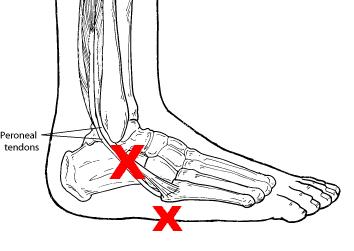
Inflammation of the peroneal tendon located at the lateral side of the foot will result in pain. The peroneal tendons run downward from your legs and pass under the lateral malleolus (a bony prominence on the outside of your foot) then attaches to the foot arch and 5th metatarsal bone.
Symptoms
- Pain on the outside of the foot
- Pain when the foot is everted or inverted
- Swelling of the back and outer part of the foot
4. Posterior tibial tendonitis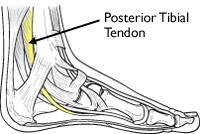
Inflammation of the posterior tibial tendon results in pain inside of the foot. It results from direct injury to the posterior tendon during repetitive use
Symptoms
- Inside foot pain worse on activity
- Flattened foot
5. Anterior tibial tendonitis
The anterior tibial tendon runs on the medial upper part of the foot. When inflamed, dorsum of foot pain is common.
Treatment of Ankle and foot tendonitis
If you think you’ve inflamed any of your foot tendons, you don’t need to panic. This truth is, most people with ankle or foot tendonitis will not need surgical intervention.
Here are some ways to recover from ankle tendonitis pain and swelling
1. Protect and rest your foot henceforth
Protecting your foot will prevent further injury to your tendons. This involves the use of crutches, splints or brace to protect your foot. Resting foot is critical to quick healing and recovery.
2. Apply ice compression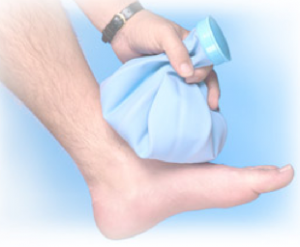
Cold treatment of the affected foot helps to reduce swelling and stop the pain. You simply need to get crushed ice, then park in a towel. After this, place on your foot for about 15 – 20 minutes repeatedly after 1 or 2 hours.
3. Compression bandages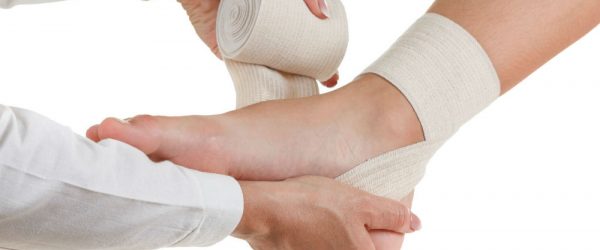
Use of compression bandage will also help swelling and pain of foot tendonitis. The compression bandage primarily holds off swelling and prevents injury from getting worse.
Get a bandage, apply few inches below the point of the injury and role over the foot until few inches above the site of injury.
Do not apply excessive tension on the bandages. If you do, it may cause numbness and a change in the color of the overlying skin.
4. Elevate your lower limb
During ankle tendonitis, you may have swelling of the foot. This can be relieved by simply raising your foot above the level of the heart. This simple technique drains water from the foot, relieves pain, and improved joint flexibility.
Simply get pillows (you can use 2) and place your foot on top of the pillow.
5. Other treatment
- Use painkillers
- Corticosteroid injections
How long does tendonitis last in the ankle and foot?
The truth is, healing time for ankle and foot tendonitis depends on the degree of the injury. If there are additional pathologies like a fracture treatment options will vary.
Having said that, recovery likely happens within days to months. It is important you adhere to your doctor instructions by avoiding weight bearing on the affected foot. If you don’t, symptoms may deteriorate and recovery delayed.

Holly E Engstrom
edema is pitted flesh is hard , it is so painful if I step on a crumb , cord and very tender just to step legs are also vey swollen .neck is very stiff skull is tender to the touch no headache though.